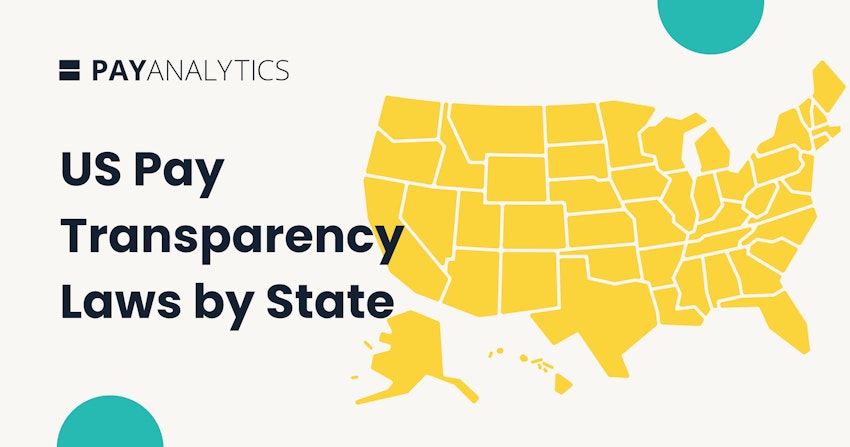The basics of means, medians, and regression analysis

In this blog, part 1 of a three-part series, we’ll deep dive into how you can measure those different pay gaps. In part 2, we'll look closely at the causes and potential remedies to different types of pay gaps. We’ll take a deep dive into more advanced calculations in the last chapter of this series, so keep a lookout.
Let’s get started.
A refresher on the nature of demographic pay gaps
Whether it’s on the basis of gender, race, or nationality, demographic pay gaps exist and persist.
The root causes of demographic pay gaps exist at all levels, from historic national and global legacies of discrimination to unconscious bias in small companies’ HR departments. Yet there’s a growing awareness of these pay gaps and the harm they cause. This awareness is driving many companies to be proactive about closing their pay gaps, while others are responding to new government requirements for pay gap calculation and reporting. It’s becoming critical for organizations to know how to calculate the pay gaps associated with any demographic factor, and to apply that knowledge in practice.
How to calculate your demographic pay gaps
In the field of pay equity, we commonly talk about two types of pay gaps: unadjusted gaps and adjusted gaps. The unadjusted pay gap is a straightforward calculation of the percentage difference between the average or median pay of each gender. The adjusted pay gap, on the other hand, compares the pay of men and women who do similar or equivalent work by taking into account differences in valid factors such as job role, education level, work experience, and management responsibilities.
Below, we’ll outline how to calculate both pay gaps at your organization. For simplicity’s sake, we discuss only the gender pay gap below, but the same approach applies to any demographic characteristics (and their intersection).
Calculating the unadjusted pay gap
The unadjusted pay gap is perhaps the most prominent key performance indicator (KPIs) in pay equity reporting. It is usually expressed either as an average or a median. Both the average and the median describe the center of a pay distribution—but each can give very different information. The average and median gaps are straightforward to calculate and we’ll walk through how to make these calculations “by hand”. You can also use formulas within common spreadsheet programs like Microsoft Excel to simplify the process (or, of course, our pay equity software solution, PayAnalytics).
Calculating the average pay gap
The average pay gap, sometimes referred to as the mean pay gap, describes differences in average pay.
The unadjusted pay gap compares the average pay of different groups. To calculate the average pay of each group (e.g. men, women, and non-binary), you’ll add up the compensation of all employees for each group and divide by the number of employees in the same group.
To then calculate the average pay gap, you need to select which group you want to compare other groups against. In the context of a gender pay gap, this group is typically men, but could be the group with the highest average pay (or any other group for that matter). The core idea is to identify the average pay discrepancy between these groups, and thus, we compare the average salaries of these groups.
As an example, let’s use men as the group to compare against. We will calculate the percent difference in average pay. To do so we’ll subtract the average pay of women from the average pay of men. This gives you the difference in average pay between them. To express this difference as a percentage gap, divide the difference by the average pay of men and, finally, multiply the resulting amount by 100 to obtain a percentage.
In mathematical terms, the average pay gap (x) can then be calculated as:

For example, we could say that men earn on average $20 per hour, while women earn $18 on average. This yields a difference of $2. This number divided by 20 (the average pay of men) equals 0.1. Multiplied by 100, this calculation yields a 10% average, or mean, pay gap. That looks like:

Factors that can influence the average pay gap calculation
For smaller organizations, or when the groups analyzed are small, one or two members of a group that have unusually high or low salaries can significantly impact this calculation. In these cases the average becomes less reflective of the reality for most other group members. This is one motivation for calculating the unadjusted median pay gap as well – the median pay gap is less sensitive to outliers compared to the average pay gap. So, in some cases, looking at the median pay gap can be beneficial as a reflection of the “average” employee experience.
It should be noted that the median pay gap can, for example, hide unequal participation within an organization. An organization can have a 0% median pay gap, but not a single woman on their leadership team. It is not bad or wrong to use the median—it does tell you about the middle of the distribution—but it misses the full comparison that the average offers. We discuss this in detail in part 3 of this series.
(For a lively discussion in 9 minutes or fewer on means and medians with Margrét Bjarnadóttir and Henrike von Platen of the Fair Pay Innovation Lab, watch the Coffee Talk.)
Calculating the median pay gap
The median is the center value. What we mean is, if you order the salaries of your employees from the largest to the smallest, and then pick the salary number that is in the middle (50% of the numbers are higher and 50% of the numbers are lower), you have found the median.
To find the median pay gap, you focus on each demographic group as you did with the average. You find the median for each group by arranging all compensation numbers in ascending order, and then find the middle value. (If there are an even number of employees, you take the average of the two middle numbers.) In other words, half your employees will have compensation below the median and half above.
For example, if you have 29 women employees, you would use the pay of employee number 15 (after ordering by compensation) as the median pay of women.
Then, similar to the calculation for the average, you take the difference in median pay between the two groups, divide it by the pay of (in our case) men, and then multiply by 100 to obtain a percentage. For example, if the median pay of men is $20 and the median pay of women is $17, then the difference is $3. Divided by 20, this yields 0.15; so, the median pay gap is 15%.
The average pay gap reflects the difference in average salaries across the organization. In contrast, the median pay gap only compares the employee(s) in the middle of your salary distribution; it reflects whether the 50th percentiles differ between demographic groups.
Moving beyond the unadjusted pay gap
The average and median calculations are relatively quick and easy, and will give you a bird’s-eye view of pay equity within your organization and can be helpful in certain types of required and voluntary reporting and certifications (including EBA benchmarking, the Spanish remuneration register, the French gender equality index, and reporting in Israel, the U.K., and Ireland). They’ll also help you spot possible pay gaps, especially when you calculate the average and median pay gaps within specific job roles or job levels within your organization. However, the unadjusted pay gap (whether the average or the median) calculations can not incorporate other important factors that might influence pay, like experience, education, or how much travel or overtime a job requires.
To account for these factors (e.g., experience, education) that inform pay, regression analysis is used to calculate the adjusted pay gap (aka the equal pay gap).
Regression analysis is a technique used in statistics to calculate how much influence different variables have on an outcome. In the pay equity context, we collect key pay drivers such as skills, knowledge, and work environment to explain pay. We then run a regression analysis to understand how the different factors, in concert, affect pay.
One important result of regression analysis is the adjusted pay gap: the average percent difference in pay after accounting for different factors that drive pay within your organization, in addition to a number of other important insights into your pay practices and structures. These insights include key pay drivers, pay inequity hot spots, differences in pay practices across the organization, and the impact of recent hires on your adjusted pay gap.
Let’s talk about pay gaps, together.
In part 2 of this series, we’ll look more closely at the context of pay gaps—how and why they arise, and how they can be further addressed. In part 3, we’ll dive into the sensitivities and advantages of each approach (mean, median, regression). We’ll also take a dig into regression analysis—why it’s beneficial for your organization and how to apply it in a real world context.
In the meantime, if you’re interested in learning about approaches to closing your pay gaps, you’ve come to the right place. Book some time with one of our pay equity specialists to talk through the paths to closing your pay gaps at your own pace.
Feel free to browse our resources library, too. Here are a few recommendations to get you started:





